Namaka Subsea have developed a range of training courses to assist with career development and the provision of a competent workforce, assisting users individuals to reach their true potential within the workplace.
All Namaka Subsea courses are being run online using Namaka's Learning Management System.
MARITIME
Platform Supply Vessel and Cargo Operations

Organisations with a positive safety culture which pervades all levels are those most likely to achieve success and excellence in all aspects of their businesses or activities. This course is designed to help clients create that culture around Offshore Marine Operations.
The aim of this training course is to provide delegates with an understanding of the best practice principles of Platform Supply Vessel (PSV) operations. Provide them with an awareness of best practices, cargo carrying & handling, bulk cargo systems. To generally increase delegates’ knowledge of regulations, standards and industry guidelines for supply vessels and their safe practices.
Outcomes
Delegates will be introduced to and gain knowledge and some experience of:
- Principles of Supply Vessel Operations
- Guidance on bulk cargo storage & transfer systems
- Cargo Transport Units (CTUs) or Cargo Carrying Units (CCUs)
- DG Cargo planning
- Bulk operations
- Clarification of the various roles of key personnel (DG)
- Relevant legislation, standards, procedures and guidelines
This course is suitable for all personnel connected to marine operations, e.g. Marine Responsible Person (MRP), offshore installation manager (OIM), deck crew, deck foreman, crane operator, storeman, materials coordinator, control room operator (CRO), supervisors, department heads, drill crew, etc. including onshore management roles.
Recommended Time Frame: 4 Hrs
Dynamic Positioning Operations

Organisations with a positive safety culture which pervades all levels are those most likely to achieve success and excellence in all aspects of their businesses or activities. This course is designed to help clients create that culture around Offshore Marine Operations.
The aim of this course is to provide delegates with an understanding of the principles of Dynamic Positioning (DP). Provide them with an awareness of the subsystems and equipment which make up a DP system and familiarise them with the different classes of DP vessels. To generally increase delegates’ knowledge of regulations, standards and industry guidelines for DP vessels and their safe practices.
Outcomes:
Delegates will be introduced to and gain knowledge and some experience of:
- Principles of Dynamic Positioning
- External and Counteracting forces
- Environmental Sensors and Position Reference systems
- Equipment Classes
- Clarification of the various roles of key personnel (DP)
- Failure Mode Effect Analysis (FMEA) & Trials
- Relevant legislation, standards, procedures and guidelines
This course is suitable for all personnel connected to marine operations e.g., Marine Responsible Person (MRP), offshore installation manager (OIM), deck crew, deck foreman, crane operator, storeman, materials coordinator, control room operator (CRO), supervisors, department heads, drill crew etc and onshore management.
Recommended Time Frame: 4 Hrs
ERRV Operations & Offshore Recovery and Rescue

Organisations with a positive safety culture which pervades all levels are those most likely to achieve success and excellence in all aspects of their businesses or activities. This course is designed to help clients create that culture around Offshore Marine Operations.
The aim of this course is to provide delegates with a summary of UK ERRV specifications, performance requirements and capabilities and the rationale behind them. To provide delegates with the knowledge with regards to ERRVs and offshore recovery and rescue. To generally increase delegates’ knowledge of Offshore Marine Operations with regards to ERRVs and offshore recovery and rescue.
Delegates will be introduced to and gain knowledge and some experience of:
- Principles of ERRV operations & offshore recovery and rescue
- Recovery & Rescue Performance Standards
- Methods of Rescue
- ERRV Survivor Recovery
- ERRV Validation Trials
- Collision Risk Management
- Relevant legislation, standards, procedures and guidelines
This course is suitable for: All personnel connected to marine operations e.g., Marine Responsible Person (MRP), offshore installation manager (OIM), deck crew, deck foreman, crane operator, storeman, materials coordinator, control room operator (CRO), supervisors, department heads, drill crew, etc including onshore management roles.
Recommended Time Frame: 4 Hrs
Offshore Marine Awareness
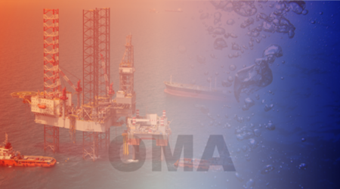
Namaka Subsea can now offer Seacroft Marine Consultants Offshore Marine Awareness course. Intended primarily for delegates with a ‘non-marine’ background, the training provides an understanding of:
- Marine operations and terminology at offshore installations
- Offshore Support Vessel types
- Collision incident and associated consequences
- Dynamic Positioning
- Roles of key personnel
- Planning, communication, monitoring and contingency
- Vessel approaches and operating limits
- Safe and unsafe practices during cargo operations
- Bulk loading operations
- Overboard discharges
- Dangerous goods
- Relevant standards, procedures and guidelines
- Recovery and rescue
Recommended Time Frame: 1 day
Safe Zone 500
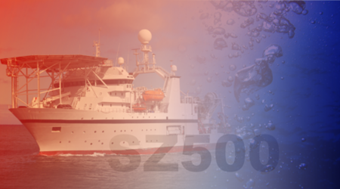
Namaka Subsea can now offer Seacroft’s SafeZone® 500 programme which is a suite of procedures, training, on-board mentoring and audit tools enabling offshore installation operators to manage and mitigate risk of collisions involving attending vessels. It sets out a common procedure which can be applied across an operator’s entire portfolio of installations and attending vessels
The programme is designed to be a fit-for-purpose, cost-effective solution enabling installation owners to demonstrate to regulators that the operators have in place suitable and sufficient procedures and processes to reduce collision risk to the ALARP level
- SafeZone® 500 Procedures lay down the checklists to be followed on board the installation and the attending vessel at each stage of the approach, and the standardised ‘challenge and response’ radio communications managed from the installation to confirm zonal control and procedural compliance at each step
- SafeZone® 500 Training reinforces to key installation and vessel personnel the criticality of controls in managing and mitigating collision risk, acquaints them with the regulatory framework, and introduces them to the ‘staged-approach’, checklists and communications protocols they will adopt. Understanding of the training is formally assessed.
- SafeZone® 500 Mentoring aboard the delegate’s installation or vessel rehearses in practice the elements learned in the classroom, but with operational focus on the delegate’s specific role in the operation
- SafeZone® 500 Audit on completion of training allows installation operators to verify compliance with the procedures laid out in the programme, and affords the opportunity for periodic re-verification of compliance
- SafeZone® 500 has already been adopted by several installation operators in the UK North Sea – indeed two operators have successfully relied upon adoption of SafeZone 500 in submissions to the UK HSE in securing the closure of enforcement notices relating to control of collision risk in the 500m exclusion zone.
SafeZone® 500 was shortlisted for the Offshore Support Journal Safety Award 2018.
Recommended Time Frame: 4 hours
OPERATIONAL
Client Representative Training
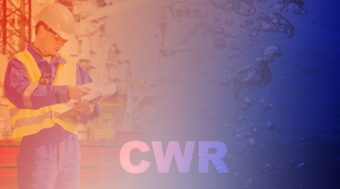
Our Client Worksite Representative course aims to introduce candidates to the tools and knowledge required to successfully carry out the Client Worksite Representative role. Based on industry understanding and compliance, this course should also be supported by the candidate's knowledge and experience they've gained over the years in the offshore industry. The course was developed following the latest legislation, guidance and best practices, so candidates can be assured that the information provided is comprehensive and current.
The course itself comprises 20 modules and includes a multi-choice assessment, completed at the end of each module. All modules are discussed in-depth and contain essential information on the requirements of a Client Worksite Representative and competence requirements based on IOGP 431, broken down into the following categories:
- Roles & Responsibilities
- The Role of Offshore Industry Organisations
- IOGP Vision, Mission, Objectives
- Client Worksite Representative Selection Process
- General Knowledge
- The Competent Person
- Leadership
- Project Planning
- Contract Management
- Project Management
- Risk Assessment
- Assurance
- Offshore Execution
- 500m Safety Zone
- Permit to Work
- Management of Change
- Stop Work Authority
- Emergency Response
- Subsea Rigging & Lifting
- Subsea Isolations
Recommended Time Frame: 5 days
Subsea Rigging & Lifting Awareness
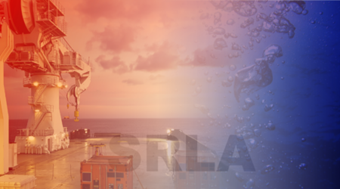
Lifting and hoisting operations are one of the major causes of fatalities and serious incidents in global Exploration and Production (E&P) activities. Every type of lift has a set of risks that need to be managed if the lift is to be undertaken safely and efficiently.
Despite the vast number of regulations, standards and guidelines that apply to lifting, incidents continue to occur. This course is based on current experience and best practices for preventing fatalities and serious incidents.
The E&P industry expects that all companies conducting lifting activities have a management system that includes specific procedures based on a full assessment of the risks and control measures required.
Namaka Subsea has developed a Subsea Rigging & Lifting Competence Training course in line with HSE legislation and industry best practices. The course is designed to provide awareness of the competence requirements and process of completing subsea rigging and lifting operations.
Recommended Time Frame: 2 days
Dive Supervisors Skills Fade Training
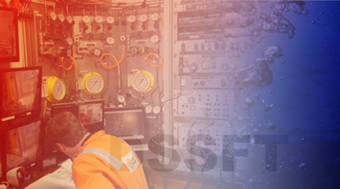
Please note that this is not an e-learning course. This course is presented with a live presenter online and due to the very low cost, requires a minimum of 6 attendees before the course can commence.
Every now and then it's a good idea to give yourself a little refreshers on skills that you may already have, but its also good to learn something new at the same time. This training course has been split into four sections for this very purpose and breaks the information down into it's simplest form so it's easily followed and understood. The course is presented live via Microsoft Teams by an engineering degree level instructor with over 30 years experience in the diving industry in both Air and SAT diving environments. The course contains details to carry out various calculation checks required by Diving Supervisors as per below:
- Dive Supervisor umbilical excursion dimension work-site checks;
- Gas source supplies & durations;
- EAD Calculations for Nitrox operations
- Gas mixing calculations for Nitrox operations
- You will be shown exactly how to carry out these calculations manually in the first instance and following the course you will be provided with a set of automated calculation spread sheets and manuals to support the content. The course content provided here is also part of our Trainee Offshore Air Diving Supervisor course so it also gives you a little glimpse of what you can expect.
Trainee Offshore Air Diving Supervisor
This IMCA Approved Trainee Offshore Air Diving Supervisor (TOADS) course is aligned with the requirements of IMCA D 013 Offshore diving supervisor and life support technician certification schemes.
To meet the demands of today’s market this course also include modules on:
- DSV Operations:
- Supervisors checks on divers umbilical excursion lengths when carrying our operations from a DSV;
- DSV umbilical calculations, with worked examples;
- Seafastenings;
- Load testing.
- Nitrox operations:
- Nitrox operations & Oxygen overview;
- Nitrox gas mixing calculations;
- Equivalent Air Depth (EAD) calculations;
- Oxygen & Nitrox legislation/ guidelines.
- Management of Change (MOC);
- Forged certification and what to look for;
- DP Reference Systems;
- Trade Industry bodies;
- UK Legislation.
There are also modules with an emphasis on simplifying the typical calculations used for Surface Supplied diving operations.
The course is scheduled to run over six days (50hrs) with an exam on day seven.
The course tutor has over 40 years’ experience in diving operations and having recently set up an offshore diving company from concept through to being operational and currently providing consultancy services to diving contractors applying to become members of the IMCA Diving Division, has been well placed to develop this course to ensure the content is current for todays market.
This course is being run online with a live presenter using Starleaf, which is accessed using an internet browser with an internet connection.
Diver Umbilical Excursion Supervisor Checks

As the Diving Supervisor has a legal responsibility ensuring diving operations are carried out safely, a check on maximum umbilical excursion lengths should be made to ensure a level of confidence that these calculations are correct and in line with current legislation and guidelines.
With this in mind, Namaka Subsea has created a suite of simplified presentations on how these checks can easily and quickly be carried out by the Diving Supervisor.
The suite of presentations covers both excursion checks for the Diver and Standby Diver either deployed through a DSV moonpool or vessel side and when utilising extended umbilicals with a mid-water tend point.
The first presentation is free to download along with the first set of sketches, allowing supervisors to gain experience in carrying out these checks.
There are another six presentations to cover all scenarios and supported with a spreadsheet to carry out these calculations.
TECHNICAL TRAINING
Introduction to IMCA DSI Scheme
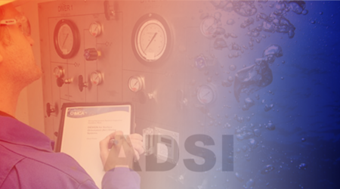
Namaka Subsea has developed a Dive System Safety Inspectors course in line with the IMCA Diving System Inspector (DSI) scheme. The course is designed to provide awareness of the competence requirements and process of completing an IMCA Diving Equipment System Inspection Guidance Note (DESIGN) inspection.
The course is made up of 15 modules and includes a multi-choice assessment which will be completed at the end of each module. All modules are discussed in-depth and contain essential information required not only to understand how an inspection should be carried out but also how to manage an inspection through to completion and is aimed at personal hoping to join the DSI scheme and become an IMCA approved DSI scheme inspector.
- Module 1 - Introduction to the IMCA Diving System Inspector (DSI) scheme
- Module 2 – What is DESIGN?
- Module 3 - The Role of Diving Industry Organisations
- Module 4 - Why DESIGN?
- Module 5 - Completed DESIGN Examples
- Module 6 - Initiating an Inspection
- Module 7 - Inspectors Competence
- Module 8 - Planning and Preparing for an Inspection
- Module 9 - How to Manage an Inspection
- Module 10 - Conducting the Inspection
- Module 11 - Planned Maintenance
- Module 12 - Certification
- Module 13 - Supporting Documentation
- Module 14 - Automated Control Systems
- Module 15 - Closing Out the Inspection
The poor quality of DESIGN inspections throughout the world has led to IMCA implementing the DSI scheme, and a register of IMCA approved DESIGN inspectors. It is, therefore, necessary for the industry to identify a core group of experienced DESIGN inspection practitioners working in every IMCA region and for them to complete the DSI scheme leading to accreditation as an IMCA DSI and inclusion to the DSI register. These diving system inspectors will have followed the DSI scheme route to certification as an IMCA DSI, and it is they who will be considered by IMCA to have the competence to complete an IMCA DESIGN inspection.
In an effort to assist the industry to achieve safer working practices and operations, Namaka Subsea plays an active role, by ensuring a position within the relevant workgroups, such as the ADSI workgroup and committees such as IMCA Safety, Medical, Technical & Training (SMTT) committee, whereby involvement in these workgroups has seen the development of inspection processes on behalf of IMCA.
Recommended Time Frame: 3 days
ROV Auditing and Assurance Awareness
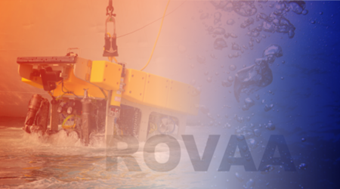
Auditing and assurance plays a crucial part in ensuring the safety and integrity of any ROV system as well as ensuring efficient operations. Therefore it is essential that all ROV systems are audited by a competent auditor, capturing and documenting all findings whether the audit is conducted periodically and/or as required by the contractor’s internal auditing practices.
Previously ROV system audits relied only on IMCA R006 Standard ROV Auditing Document which provides a basic/standard template approach for ROV documentation for assurance records associated with a project but has not been revised since July 2017 to reflect current industry practices.
ROV contractor audits, whether technical or operational should be carried out in a reasonable time ahead of any subsequent project or annual audit requirements and in accordance with industry-current best practices. It is no longer acceptable to carry out an ROV contractor audit after the award of a contract or during the project mobilisation with time restrictions as a limiting factor.
Due to the introduction of new laws within the UK for corporate manslaughter, which would hold the End Client (Operator) accountable as well as the ROV Contractor, the Association of International Oil and Gas Producer (IOGP) member Operators decided their duty of care should be increased with the development of assurance.
Furthermore, the course gives additional guidance to the International Marine Contractors Association in areas such as the requirements of The Association of International Oil and Gas Producers (IOGP). These requirements may include the introduction of a bespoke audit document to be generated detailing individual client/company needs.
Recommended Time Frame: 1 days
PLCs, Automation & Functional Safety Within Diving Systems

As the world of diving further utilises automation for the management of subsystems, Namaka Subsea has developed a one-day training course for the Introduction to PLCs, Automation & Functional Safety Within Diving Systems. This course aims to provide an awareness of the design, management and assurance requirements of the safety evaluation process to achieve “freedom from unacceptable risk”, as defined within the BS EN 61508 “Functional Safety of Electrical/Electronic/Programmable Electronic Safety-Related Systems” suite of standards.
The course comprises of several modules, which are discussed in-depth and contains essential information required to understand how to manage diving systems operated by all levels of automation. The course is aimed at all levels of diving technical management personnel and those involved with the dive system assurance process.
Since there are many means of automating functions, the course will outline the principles of identifying a function and give a basic understanding of applying the process required. The course will provide guidance for operating and managing automated control systems to ensure a suitable and safe working environment for all operating personnel.
Namaka Subsea has previously developed diving system automation management systems for both contractor and operator Clients to ensure that they have considered their duty of care at the required level to ensure compliance with global equipment automation standards.
Please note that this course is NOT aimed at providing the dive system technicians or system operating personnel with the necessary skills to operate these systems. As outlined and covered within the course contents, training on specific systems is the responsibility of the system owners & operators. Are you prepared?
Duration: 1 day
Failure Modes Effects & Criticality Analysis Awareness
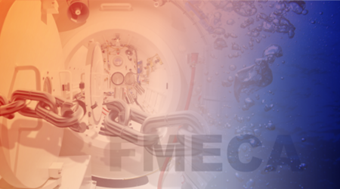
Failure Modes, Effects and Criticality Analysis (FMECA) is a term used frequently throughout the diving industry, but exactly what is a diving system FMECA?
Namaka Subsea has developed a one-day FMECA awareness course. The course is designed to provide awareness of the methodology and process of completing a diving system FMECA as well as guidance on how best to review current diving system FMECA’s.
The course is made up of sixteen modules, which are discussed in-depth and contain essential information required not only to understand how a FMECA should be carried out but also how to manage a FMECA upon completion and is aimed at all diving operational personnel.
The FMECA of a diving system shall assess the effects on different failure modes on the diving system operating equipment and where required the support vessel interfaces. The resultant quantification may highlight deficiencies in design, lack of redundancy and failure to maintain the recommended critical spares to ensure safe and efficient diving operations.
Recommended Time Frame: 1 day
Diving Operations Auditing & Assurance Awareness
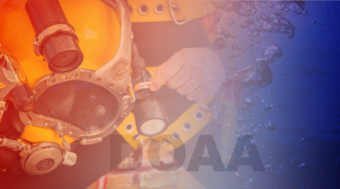
Auditing and assurance play a crucial part in ensuring the safety and integrity of any diving operation, with the emphasis on diver safety. Therefore, it is essential that diving contractors are audited technically and operationally by a competent auditor, periodically or prior to the commencement of a diving project.
Namaka Subsea has developed a diving operations auditing and assurance awareness course. The course is designed to provide awareness of the competence requirements and process of completing diving contractor technical and operational audits.
The course is made up of 16 modules and includes a multi-choice assessment which will be completed at the end of each module. All modules are discussed in-depth and contain essential information required not only to understand how an audit should be carried out but also how to manage an audit through to completion and is aimed at all diving personnel involved with diving operations.
- Module 1 - Introduction to Diving System Auditing and Assurance.
- Module 2 - What is Diving System Auditing and Assurance?
- Module 3 - The Role of Diving Industry Organisations
- Module 4 - Why Diving Operations Auditing and Assurance?
- Module 5 - Initiating an Audit
- Module 6 - Auditor Competence
- Module 7 - Planning and Preparing for an Audit
- Module 8 - How to Manage an Audit
- Module 9 - Operations Audit
- Module 10 - Technical Audits
- Module 11 - Planned Maintenance
- Module 12 - Certification
- Module 13 - Supporting Documentation
- Module 14 - Failure Modes Effect and Criticality Analysis
- Module 15 - Classification, Who, What, Why, How?
- Module 16 - Closing Out the Audit
The introduction of new laws throughout the world regarding corporate manslaughter, which would hold the End Client [operator] accountable as well as the Diving Contractor, has led to diving contractor audits evolving. The past few years have seen a substantial change in diving contractor auditing and assurance within the industry, due to more in-depth audits and a requirement for higher competencies of diving operations auditors.
In an effort to assist the industry to achieve safer working practices and operations, Namaka Subsea plays an active role, by ensuring a position within the relevant workgroups, such as the International Diving Industry Forum (IDIF) and committees such as IMCA Safety, Medical, Technical & Training (SMTT) committee. Involvement in these workgroups has seen the development of auditing processes on behalf of IOGP and IMCA.
Recommended Time Frame: 3 days
KeyFacts Energy Industry Directory: Namaka Subsea l KeyFacts Energy news: Training
 KEYFACT Energy
KEYFACT Energy